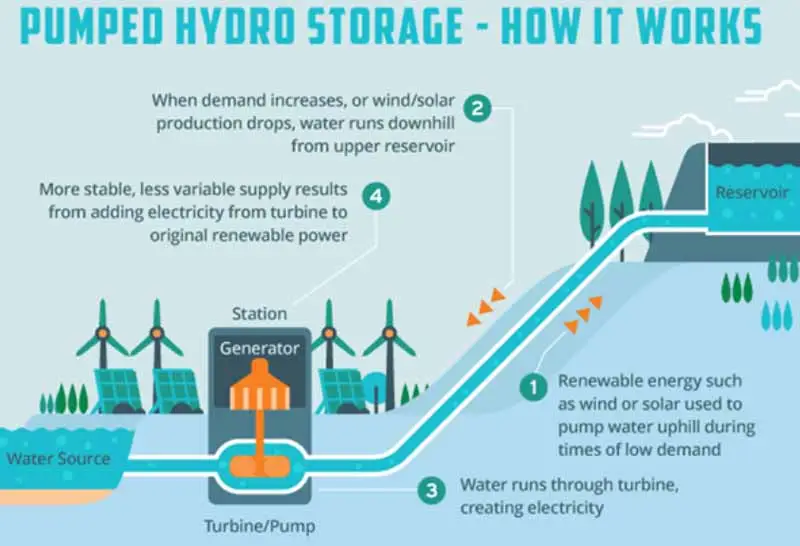Hydroelectric power, also referred to as hydropower, is a clean and renewable energy source that uses the force of moving water to produce electricity. This technology has been around for more than a century and has grown in significance as the world tries to lessen its dependence on fossil fuels and lessen the effects of climate change. This article will examine the development of hydroelectric power, its history, its technology, as well as its benefits and drawbacks.
Hydroelectric Power: History
Since ancient times, irrigation systems and different mechanical devices like watermills have been powered by hydroelectric power. The first hydroelectric power station, however, was not constructed until the late 19th century, in Appleton, Wisconsin, in 1882. This facility produced electricity using a water engine, and it was soon obvious that hydropower was a very promising source of energy.
As more power plants were constructed globally over the following several decades, hydroelectric power gained importance as a source of energy. The Hoover Dam, which was finished in 1936, is arguably the most well-known hydroelectric generating plant. The biggest hydropower producing nations are China, Canada, Brazil, and the United States, which together produce 16% of the world’s electricity today.
How Hydroelectricity is Produced
Utilizing the force of moving water to spin turbines and produce electricity is how hydroelectric power works. The building of a dam or other structure that impounds water in a reservoir marks the start of this procedure. A penstock is a pipe or channel that the water flows through after it is discharged from the reservoir in order to reach the turbine.
Water pressure propels the turbine’s blades, which turn a generator to create energy. The water is discharged into a smaller reservoir or back into the river after going through the propeller. The height of the dam, the amount of water flowing through the penstock, the effectiveness of the turbines and generators, and other factors all affect how much energy a hydroelectric power plant can produce.

How hydroelectric power is produced. Source.
The Benefits of Hydroelectric Power
The fact that hydroelectricity is a clean and renewable energy source is one of its greatest benefits. Hydroelectric power doesn’t release any atmospheric pollution or greenhouse gas emissions when it is burned, in contrast to fossil fuels, which do so. In addition, hydroelectric power plants have a long lifespan and, with proper upkeep, can run for decades or even centuries.
To counteract the erratic output of other sustainable energy sources like wind and solar power, hydropower can also be used to store energy. Hydropower plants can store energy that can be released during periods of high demand by using the extra energy from these sources to pump water into a higher reservoir.
Challenges of Hydroelectric Power
Hydroelectric power has a lot of benefits, but it also has some drawbacks. The effects of dams and reservoirs on the environment are one of the greatest obstacles. Large-scale hydroelectric projects may alter water flow, temperature, and sediment transport, which may have a major effect on river ecosystems. Dams may also obstruct fish and other water species from migrating, which could harm the populations of these species.
The possibility for dam failures and other accidents presents another difficulty. Dam failures can be catastrophic and have historically resulted in significant loss of life and property damage, despite the fact that hydroelectric power is generally regarded as a secure and dependable source of energy.
Jobs within the Hydroelectricity Industry
Jobs in the hydroelectric industry span a wide range of disciplines, including engineering, construction, operations, maintenance, and management. Some of the most common job titles in this industry include civil engineers, mechanical engineers, electrical engineers, hydrologists, environmental scientists, project managers, plant operators, and maintenance technicians.
Civil engineers play a critical role in the design and construction of hydropower facilities, including dams, reservoirs, penstocks, and tunnels. Mechanical engineers are responsible for designing and maintaining the equipment used to convert the mechanical energy of water into electricity. Electrical engineers are responsible for the design and maintenance of the electrical systems that distribute the electricity generated by hydropower plants.
Hydrologists and environmental scientists are responsible for monitoring the impact of hydropower facilities on the environment, including water quality, wildlife habitats, and ecosystems. Project managers oversee the construction and operation of hydropower facilities, ensuring that projects are completed on time and within budget. Plant operators and maintenance technicians are responsible for operating and maintaining the equipment used in hydropower plants.
Other jobs include:
- Project manager
- Electrical Engineer
- Head of Dams and Hydropower
- QA/QC Manager
- Mechanical Engineer
- Senior/Lead Civil Engineer – Water Structures
Conclusion
Researchers and engineers are creating new technologies that can increase the efficiency and lessen the environmental impact of hydroelectric power plants in order to address some of the difficulties connected with hydropower. Fish ladders and fish-friendly turbines, for instance, can contribute to the preservation of fish populations and the health of river environments. Additionally, novel methods of dam management and design, such as “run-of-the-river” dams that don’t impound water, can lessen the effect of hydroelectric power on the environment.
Overall, the transition to a low-carbon, sustainable energy system could benefit greatly from the use of hydroelectric electricity. Despite having some difficulties, this pure, renewable energy source has many advantages. As we advance and better comprehend hydropower technology and the effects it has on the environment, we can work toward a time when hydropower plays a significant part in providing for our energy requirements while also preserving the planet’s natural resources.
Sources
- National Geographic Education. (n.d.). Hydroelectric Energy. Retrieved from https://education.nationalgeographic.org/resource/hydroelectric-energy/
- European Commission. (2021). Hydropower. Retrieved from https://research-and-innovation.ec.europa.eu/research-area/energy/hydropower_en
- U.S. Department of Energy. (2021). How Hydropower Works. Retrieved from https://www.energy.gov/eere/water/how-hydropower-works
On the look for a job in the Energy industry?
WTS Energy connects energy talent with energy pioneers worldwide.
Check out our vacancies!




